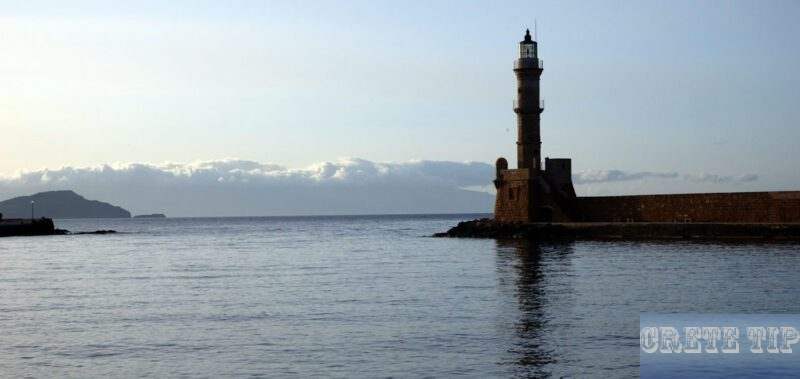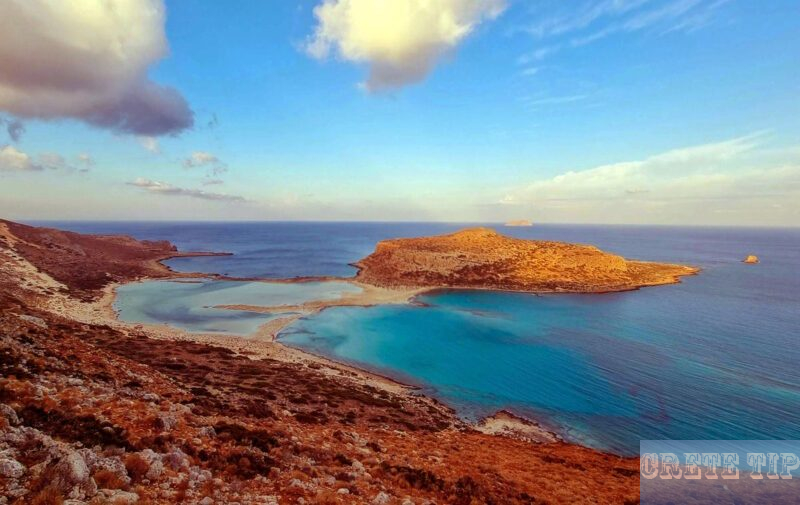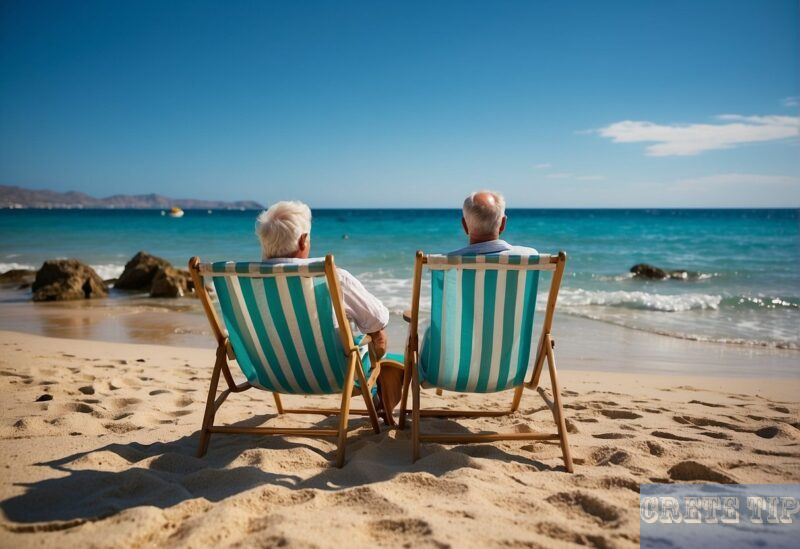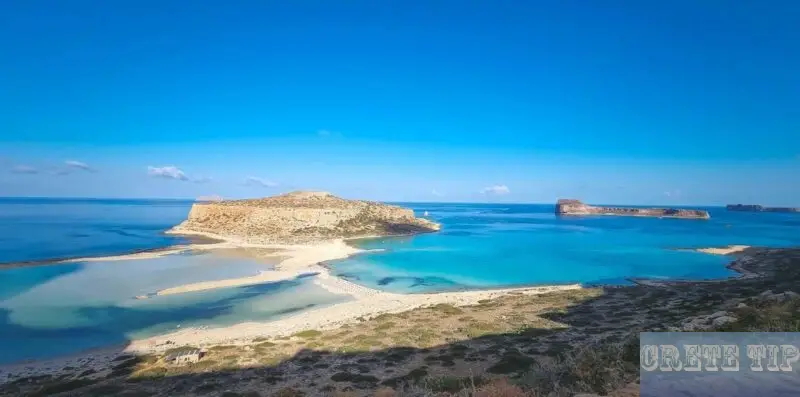The Gramvousa Peninsula is, honestly, one of Crete’s most spectacular and untouched corners. Here, turquoise water hugs dramatic rocky cliffs on the island’s northwestern tip.
This remote region brings together three must-see spots: the old Gramvousa Island with its Venetian fortress, the jaw-dropping Balos Lagoon and its pinkish sands, and the ancient ruins of Falasarna with its wild beaches.
This wild peninsula offers a mix of natural beauty, history, and adventure. You can get here by boat or on foot—either way, you’ll earn some of the best views in the Mediterranean.
The area stays protected under Natura conservation laws, which helps keep its plants, animals, and landscapes just the way they should be.
Maybe you’re itching to chase pirate legends on Gramvousa Island, float in the warm shallows of Balos Lagoon, or poke around the archaeological sites of Falasarna. This guide’s here to help you figure out the logistics, find the hidden gems, and get the most out of your trip to this wild patch of Crete.
Overview of the Gramvousa Peninsula
The Gramvousa Peninsula sits at the northwestern edge of Crete, jutting out into the sea. It’s dramatic, remote, and full of stories—plus, it’s a crucial ecological sanctuary.
Geography and Natural Landscape
The Gramvousa Peninsula stretches from Crete’s northwest coast into the Mediterranean, forming part of the Chania region. You’ll spot it at the island’s westernmost tip, where it creates a stunning backdrop for the Bay of Kissamos.
Expect rugged cliffs, rocky outcrops, and pristine beaches. The limestone coastline has been shaped by wind and waves for centuries.
At the tip, you’ll find the famous Balos Lagoon tucked between the mainland and Gramvousa Island. The shallow lagoon shimmers in turquoise, with pink sand thanks to crushed seashells.
The terrain feels wild and untouched. You’ll wander through sparse vegetation—mostly tough shrubs and local plants that somehow survive in these rocky, sunbaked conditions.
Historical Background
The Gramvousa Peninsula’s strategic spot attracted attention for centuries. In the 16th century, the Venetians built a fortress on Gramvousa Island to keep an eye on shipping lanes.
During the Greek War of Independence in the 1820s, revolutionaries used the peninsula and nearby waters as a base against Ottoman forces.
After Greece gained independence, the area briefly sheltered all sorts of groups. The London Protocol of 1830 handed it back to the Ottomans, at least until Crete eventually won its freedom.
There’s archaeological evidence that people have lived here since ancient times. Controlling this spot meant controlling access to Crete’s western coast.
Ecological Significance
The Gramvousa Peninsula is a protected habitat within the Natura 2000 network. This status helps shield its rare plants and animals from development.
The area hosts several endemic plant species you won’t see anywhere else. These plants are tough, surviving in the rocky, salty soil.
Migratory birds stop here on their journeys across the Mediterranean. Eleonora’s falcon, for example, nests in the cliffs and rocks.
Underwater, you’ll find important seagrass beds and caves that support all sorts of marine life. These spots need protection from pollution and too much human activity.
Conservation efforts aim to keep the peninsula wild while allowing sustainable tourism. Visitors, honestly, play a big part in keeping this place special for the future.
Gramvousa Island: Imeri and Agria
Two uninhabited islets sit off Crete’s west coast near Balos Lagoon. Imeri Gramvousa is the main stop for tourists, thanks to its Venetian fortress, while Agria Gramvousa stays mostly untouched.
Imeri Gramvousa: The Tame Island
Imeri Gramvousa—meaning “tame”—is the bigger and easier to reach of the two. This rocky island rises 137 meters above the water.
Most boat trips to Balos Lagoon stop at Imeri Gramvousa. There’s a small pebbled beach where you can swim or just hang out for a bit.
Key features of Imeri Gramvousa:
- Small harbor for boats
- Hiking trail up to the fortress ruins
- Epic views of Balos Lagoon
- Visible shipwreck remains on the shore
Back in 1825, this island became the first part of Crete freed from Ottoman rule. Cretan revolutionaries tricked the guards and captured the fortress.
You can wander around the island’s rocky terrain and stumble across reminders of its turbulent history. The walk to the fortress takes about 20 minutes, and it’s a bit of a climb.
Agria Gramvousa: The Wild Islet
Agria Gramvousa, or “wild” islet, sits further out and barely sees any visitors. This smaller island has stayed almost completely untouched.
There aren’t regular boats to Agria Gramvousa. It doesn’t have the facilities or history of its neighbor.
Characteristics of Agria Gramvousa:
- More isolated
- No facilities
- Wild, pristine environment
- Hardly any tourist access
The islet gives seabirds and marine life a safe haven. Its isolation keeps its ecosystem intact.
Most people just admire Agria Gramvousa from afar while visiting Imeri Gramvousa or Balos Lagoon. If you’re into photography, the silhouette at sunset is something else.
Venetian Fort and Pirate History
The Venetian fortress on Imeri Gramvousa goes back to the 16th century. You’ll see thick stone walls and old defensive structures that once guarded Crete’s northwest.
The Venetians built it to control trade routes. Later, the Ottomans took over, and eventually, it became a base for revolutionaries.
Historical timeline:
- 16th century: Venetians build the fortress
- 1692: Ottomans seize the island
- 1825: Cretan revolutionaries take control
After the Greek War of Independence, pirates used the island as a hideout. Some locals still whisper about hidden treasure buried on the rocky slopes.
The fortress ruins offer mind-blowing views across the Aegean. You can poke around the old walls, chambers, and lookout points.
This site shares historical significance with other Venetian forts like Spinalonga. Both places remind you just how far Venice’s reach once stretched across the Eastern Mediterranean.
Balos Lagoon and Beach
Balos Lagoon is easily one of Crete’s most photographed spots. Here, turquoise water laps at sand that sometimes looks pink, thanks to tiny crushed shells.
The lagoon forms naturally between the Gramvousa Peninsula and Cape Tigani, creating shallow pools and sandbars where wildlife thrives.
Scenic Beauty of Balos Lagoon
The lagoon’s colors—turquoise, azure, sometimes even green—shift as the day goes on. The contrast between the deep sea and the shallow lagoon is honestly jaw-dropping. You just can’t help but stare.
You’ll spot the pink-tinged sand right away. It’s a mix of crushed shells and white sand, making for a shoreline that’s almost too pretty to be real.
Dramatic cliffs surround the lagoon on three sides, offering killer viewpoints for photos. Plus, they throw some much-needed shade during the hottest hours.
There’s no permanent development here—no hotels, no shops. The wild landscape stays wild, and that’s a big part of its charm.
Sandbar and Shallow Pools
The lagoon sits where the Gramvousa Peninsula meets Cape Tigani. This creates a protected spot with calm, shallow pools behind a sandbar.
Water depth changes a lot across the lagoon. You can stroll through ankle-deep water or swim in deeper spots where the lagoon meets the sea.
The sandbar acts as a natural shield, keeping waves out and making the inner lagoon perfect for swimming or snorkeling—especially if you’re visiting with kids.
Tides change the lagoon’s look throughout the day. At low tide, more of the sandbar appears; at high tide, you get deeper pools for a good swim.
Wildlife and Natural Environment
The lagoon supports several protected plant species that thrive in the salty, sandy environment. These tough plants stabilize the dunes and give local wildlife a home.
Seabirds are everywhere here—cormorants, gulls, and others show up often. The cliffs nearby make great nesting spots, while the lagoon itself offers plenty of food.
The clear, shallow waters hold diverse marine life. If you go snorkelling, you might catch glimpses of small fish, sea urchins, or the occasional shellfish.
Conservation efforts aim to protect this fragile ecosystem. Visitors need to stick to certain guidelines to help keep Balos Lagoon wild and beautiful for years to come.
Falasarna: Ancient City and Modern Beach
Falasarna brings together archaeological ruins and award-winning beaches on Crete’s west coast. The ancient Greco-Roman city sits right next to turquoise waters that draw travelers from all over.
Historical Ruins of Falasarna
The ancient city of Falasarna used to be one of western Crete’s most important settlements during the Hellenistic and Roman eras. You’ll find these ruins at the northern end of the main beach.
Falasarna became famous for its natural harbour, the only one like it in western Crete. They built it in a small lagoon, which made the city a key trading hub for centuries.
Key archaeological features include:
- Ancient harbour remains
- City walls and foundations
- Greco-Roman building structures
- Strategic defensive positions
You can wander through the ruins at your own pace since they’re so close to the sand. The views from here are honestly stunning—ancient streets, coastline, and all that blue.
The name Falasarna comes from the mythical nymph Falasarni, who supposedly gave her name to the place. Mythology or not, it’s a cool detail.
Seaside Activities and Beaches
Falasarna’s beaches rank among Crete’s best. Pachia Ammos is the main stretch, and it’s won awards as the best beach in Crete—some even put it in Europe’s top 10.
The white sandy beaches face west, setting the scene for fantastic sunsets. You’ll find sunbeds, umbrellas, and beach bars if you want them.
Popular activities include:
- Windsurfing (the wind’s no joke here)
- Swimming in crystal-clear waters
- Water sports
- Beach parties in August
North of Pachia Ammos, there’s an 800-metre stretch of sand running along the coast. If you want a quieter swim, check out the pebbled cove near the ruins.
Head south of the main beach and you’ll find two more spots—one’s sandy with rocky seabeds, the other’s pebbly and sits near a tiny harbour.
Falasarna Beach on Google Maps
Comparing Falasarna and Balos
Both beaches give you something special in western Crete, but they really aren’t the same vibe or experience.
Falasarna advantages:
- Easy car access and hassle-free parking
- Lots of facilities and amenities
- Several beaches to pick from
- Ancient ruins right there
Balos advantages:
- That wild, exotic lagoon look
- More peaceful and untouched
- Dramatic cliffs all around
- Way fewer crowds (if you can get there)
Falasarna works well for families or anyone who likes comfort. Balos? That’s for the adventurous. You can actually visit both on boat trips from Falasarna’s port.
The cruise between them takes about six hours, so you’ll get a full day to soak in both spots.
How to Visit: Access, Routes, and Tips

You can reach the Gramvousa peninsula by boat from Kissamos port or by driving and hiking across some rough terrain. The best way depends on your energy level and how much time you’ve got—boats are easier, but driving gives you more freedom.
Getting There By Boat from Kissamos
Boat trips leave daily from Kissamos port during high season. Most cruises head out between 10:10 and 12:40 in the morning.
Return trips usually leave between 17:45 and 19:40. The schedule shifts with the season, so it’s smart to check before you go.
The crossing takes about 15 minutes to reach Imeri Gramvousa island. Most tours stop at both Gramvousa and Balos Lagoon.
You can book day tours from Chania if you’re staying further away. It really takes the hassle out of planning.
Gramvousa island itself is only reachable by boat. Cruise companies run regular services from Kastelli-Kissamos.
Driving to the Peninsula and Hiking
From Kastelli-Kissamos, drive west 6km to Kaliviani village. There, you’ll find a gravel road heading northwest along the peninsula.
The road’s rough. You’ll want a sturdy vehicle—ideally a 4×4 for this kind of drive.
Drive to Cape Ligari and park near Agia Irini church. From there, you’ll hike about three hours along a signed path to Balos Lagoon.
The landscape is rocky, with low plants and not much shade. Bring plenty of water, trust me—you’ll need it.
Kaliviani Traditional Hotel is just 9km from Balos Lagoon if you want to stay close. Kissamos town is only 6km away, too.
Best Times to Visit and Essential Advice
High season runs May to October when boats run daily. Summer’s warm but crowded, so plan accordingly.
Spring and autumn are cooler for hiking. The sea stays warm enough to swim until late October, which is kind of a bonus.
Book your boat in advance if you’re coming in peak season. July and August especially get booked up fast.
Don’t forget sun protection, water, and decent shoes. The ground’s rocky and it can be a real workout.
Mornings are best for photos. The light’s softer and you’ll dodge the worst of the afternoon heat.
Staying in Kaliviani village can cut down your travel time. The Bay of Kissamos also has plenty of places to stay if you prefer a bigger town feel.
Nearby Destinations and Local Experiences

The Gramvousa peninsula opens the door to real Cretan villages, traditional places to stay, and food that gives you a taste of the island’s culture. From bustling Kissamos to historic sites like Spinalonga, there’s a lot more than just beaches out here.
Exploring Kissamos and Kaliviani Village
Kissamos acts as the main base for exploring the peninsula. The port here is where you’ll catch boats to Gramvousa and Balos.
In town, you’ll find classic tavernas and cafés offering local dishes. Shops sell handmade crafts and local products that make for nice souvenirs.
Kaliviani village is tucked just inland from Kissamos Bay. It’s a tiny spot but feels super authentic—traditional Cretan life is still the norm here.
The village has kept its old stone houses and winding streets. Local families still farm the land like they always have.
Kaliviani Traditional Hotel gives you a place to stay that fits the vibe—restored buildings, local stone, and traditional architecture.
You can wander through olive groves and vineyards around the village. It’s a calm, peaceful place—totally different from the busier tourist areas.
Alternative Peninsulas and Islands
Spinalonga sits on Crete’s eastern coast, about 200 km from Gramvousa. It was a leper colony until 1957, which is wild to think about.
The Venetian fortress here is in great shape and you can join a guided tour. Boats to Spinalonga leave from Elounda or Agios Nikolaos.
Chania old town is another cultural highlight within driving distance. The Venetian harbour and lighthouse are perfect for an evening stroll.
The covered market sells local stuff like olive oil and honey. Leather workshops are still going strong in the old part of town.
Boat trips from Chania harbour give you new views of the coastline. With a longer stay, you can easily hop between peninsulas.
Cretan Cuisine and Accommodation
Local tavernas serve dakos (barley rusks with tomatoes) and fresh seafood straight from Kissamos Bay. Most restaurants use ingredients from nearby farms and fishing boats.
Lamb with wild greens is a classic dish in villages around the peninsula. Wild herbs like oregano and thyme grow everywhere on the hillsides.
You’ll find everything from simple guesthouses to boutique hotels for accommodation. Some places even offer cooking classes with traditional Cretan recipes—worth trying if you’re into food.
Olive oil tastings happen at local farms during harvest season. You’ll get to sample varieties and learn about how they’re made.
Wine estates in the area use indigenous grapes for their wines. Most tours include tastings with local cheeses and olives—honestly, not a bad way to spend an afternoon.
Frequently Asked Questions

Planning a trip to the Gramvousa Peninsula? There are a few ways to get here, and timing matters. Entry rules and boat schedules change depending on season and route.
What are the best ways to travel from Falasarna to Balos?
You can drive from Falasarna to the Balos car park in about 30 minutes, but the dirt road is rough. You’ll need to watch out for potholes and loose gravel—rental cars don’t always love it.
Once you park, it’s a 20-minute walk downhill to Balos Lagoon. The hike back up takes about 40 minutes and can be a real slog if it’s hot.
Or, skip the drive and take a boat tour from Kissamos port. That way, you can visit both Gramvousa Island and Balos Lagoon in one easy trip.
Can you recommend any boat tours from Falassarna to Balos?
Most boat tours to Balos leave from Kissamos port, not directly from Falasarna. They usually stop at both Gramvousa Island and Balos Lagoon.
Tours run daily in summer, from May to October. Expect about two hours at Gramvousa and two and a half at Balos Lagoon.
Prices don’t vary much between operators. It’s smart to book at least a day ahead, especially when summer crowds hit.
What should I know before going sailing in Falasarna?
The weather can flip fast out here, so always check the forecast before heading out. Strong winds sometimes force cancellations for boat trips to Gramvousa and Balos.
The waters around Falasarna belong to a protected marine area. Please respect local wildlife—don’t disturb monk seals or loggerhead turtles if you spot them.
There’s not much shade on the boats. Bring sunblock, a hat, and plenty of water; snacks help too, especially on longer trips.
What are the must-see attractions in the Gramvousa Peninsula?
Balos Lagoon is probably the most famous spot, with those unreal turquoise shallows and streaks of pink sand. If you walk up the path above, the panoramic views are honestly breathtaking.
Gramvousa Island has this old 16th-century Venetian fortress at the top. The climb only takes about twenty minutes, and the views from up there are worth every step.
Falasarna Beach is a great place to catch the sunset, and it’s often called one of Crete’s best beaches. There are also ancient ruins scattered around if you’re into a bit of exploring.
How can I visit Gramvousa Island from Crete?
You can only get to Gramvousa Island by boat—there’s no bridge or road. Most people join a boat tour from Kissamos port.
Boats usually leave around 10:00 AM and get back by 6:00 PM. It takes about an hour and a half each way.
If you want something more private, you can hire a boat charter. It costs more, but you’ll have flexible timing and a smaller group.
Are there any entry fees or specific visiting hours for Balos Lagoon?
If you’re hopping on a boat tour, expect a £1 administration fee per person. That money goes toward environmental protection—pretty fair, considering the area’s beauty and fragility.
Balos Lagoon itself doesn’t really have set visiting hours. Boat tours, though, run on fixed schedules and there aren’t many departures each day.
If you’re driving, you can show up whenever you like. Early mornings or late afternoons are the sweet spots if you want to dodge the crowds.
Just a heads up: facilities are almost non-existent. You won’t find shops or restaurants around, so plan ahead.




